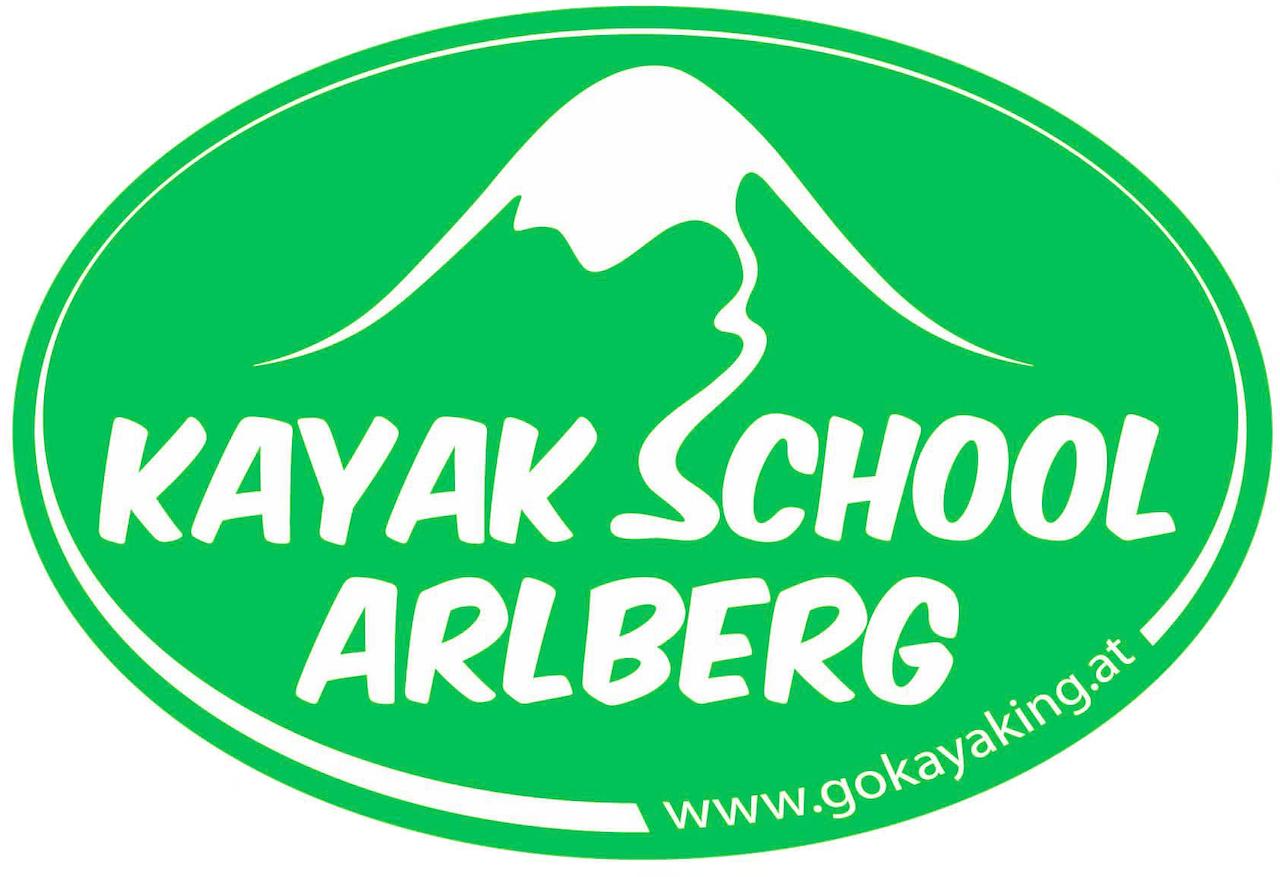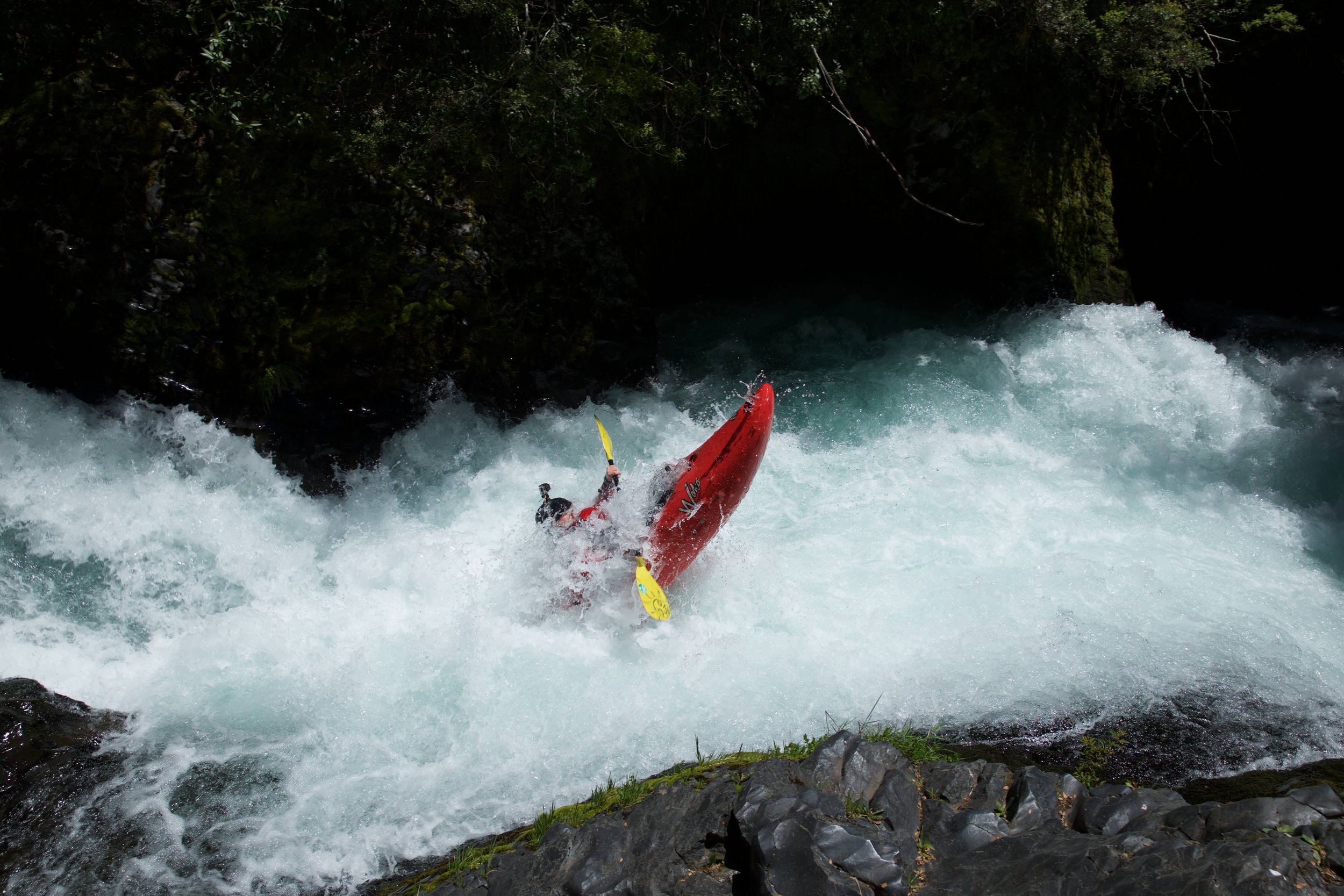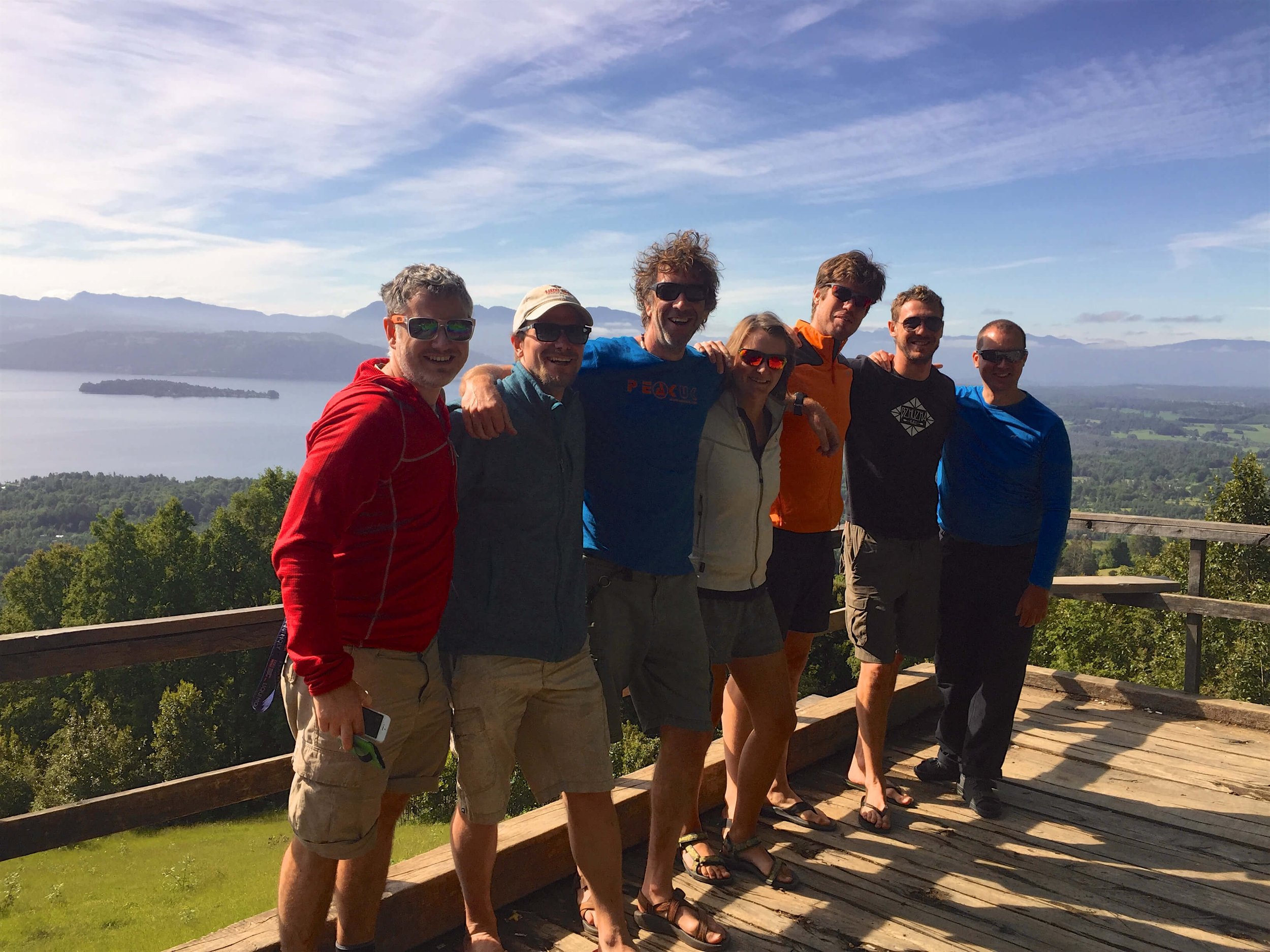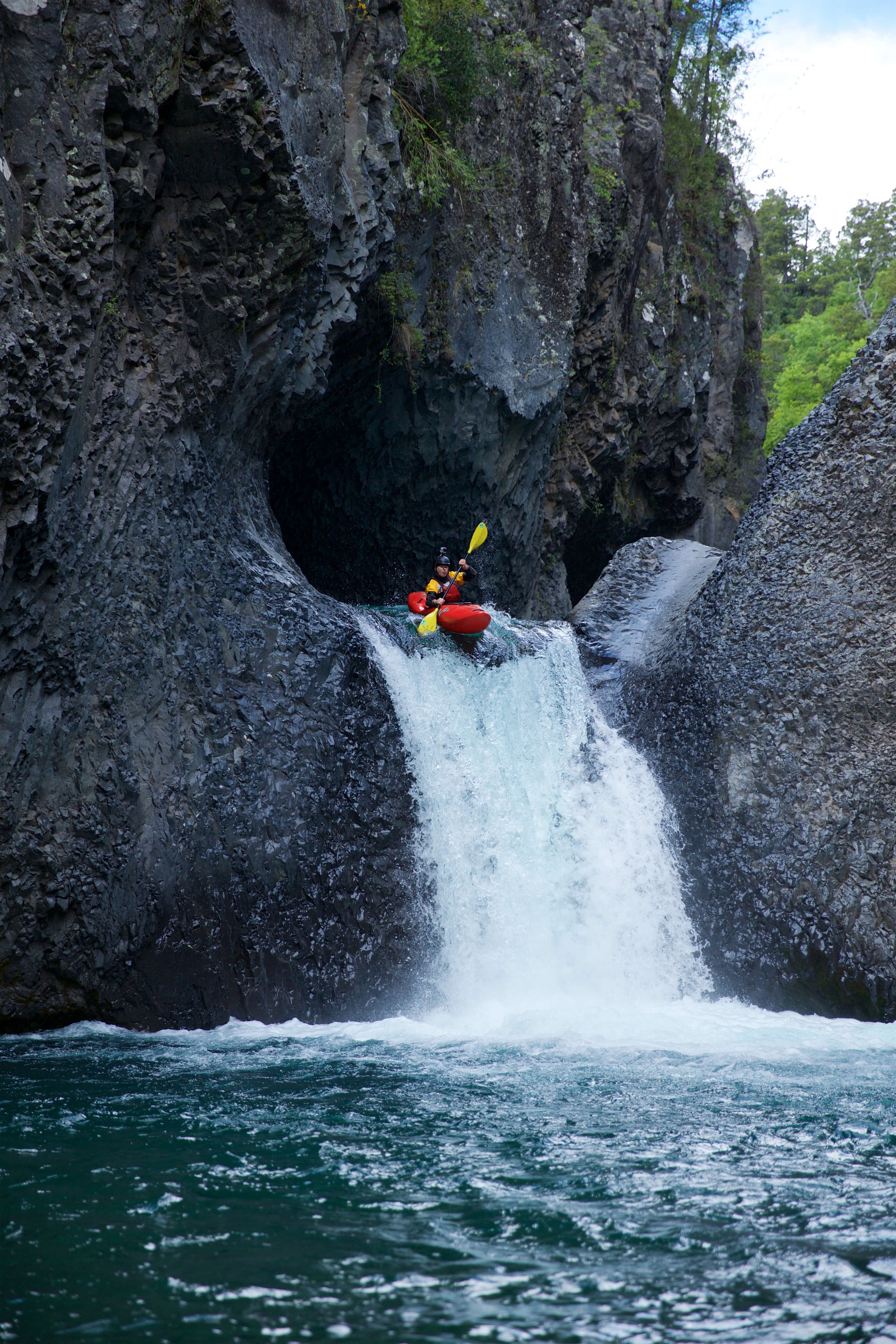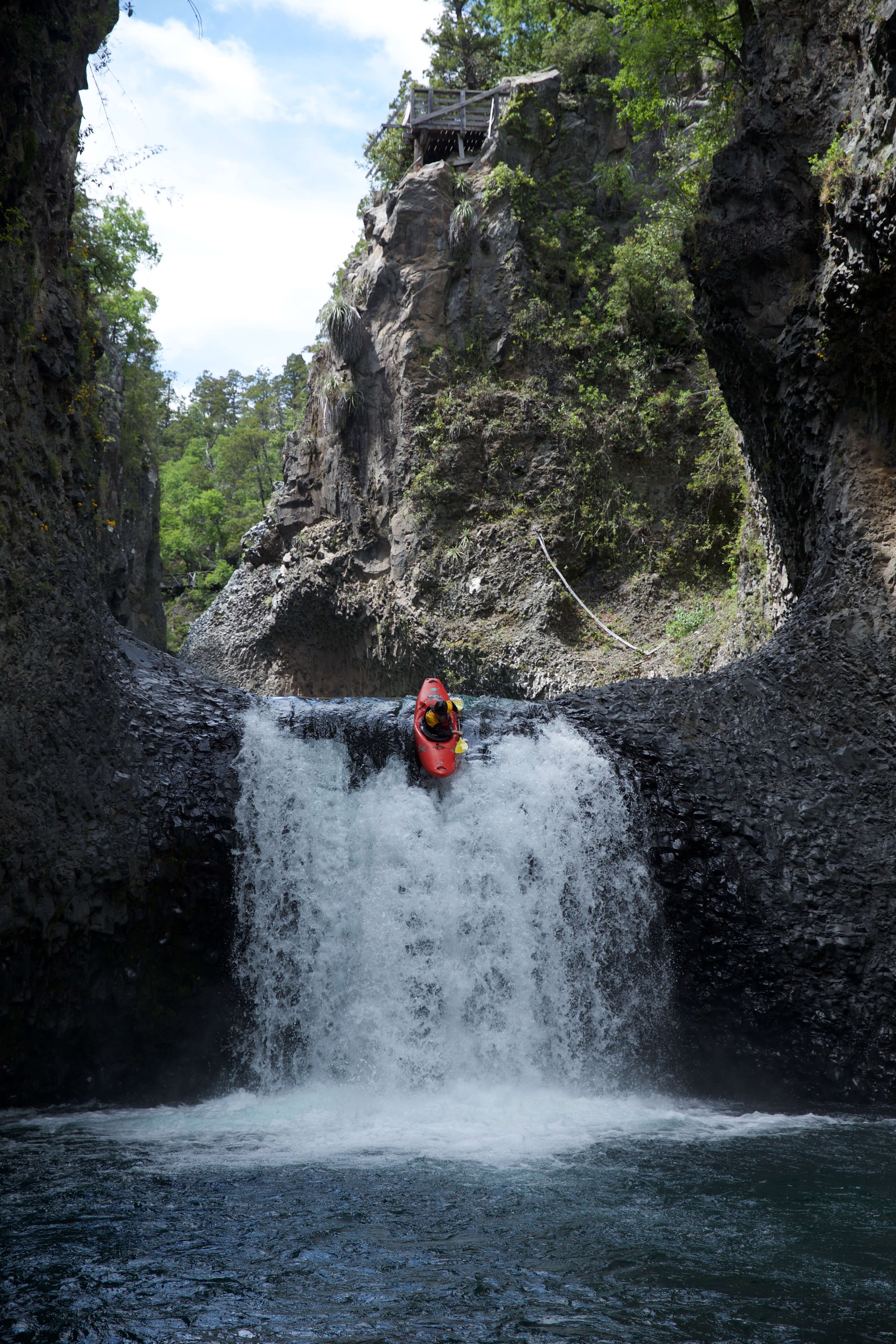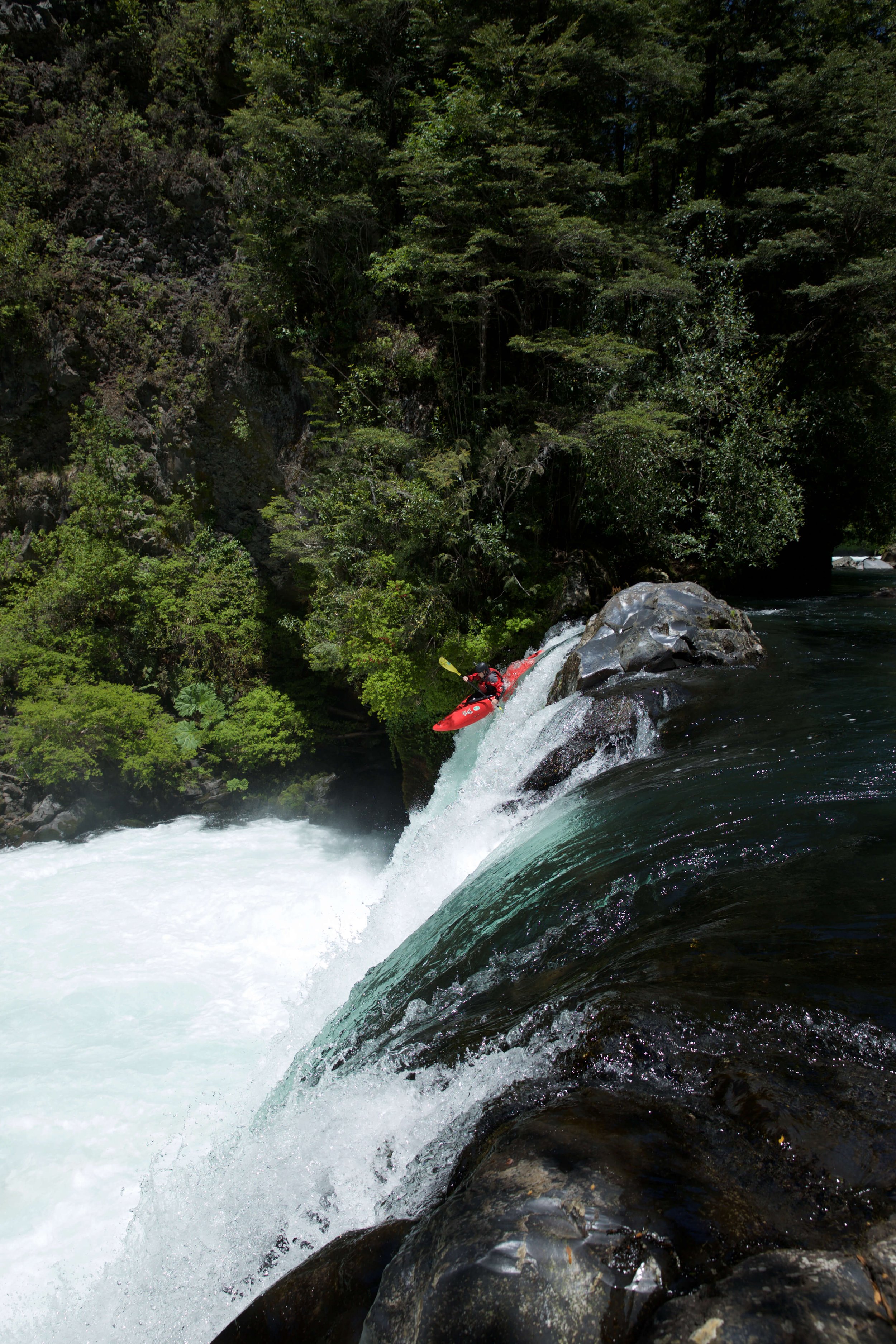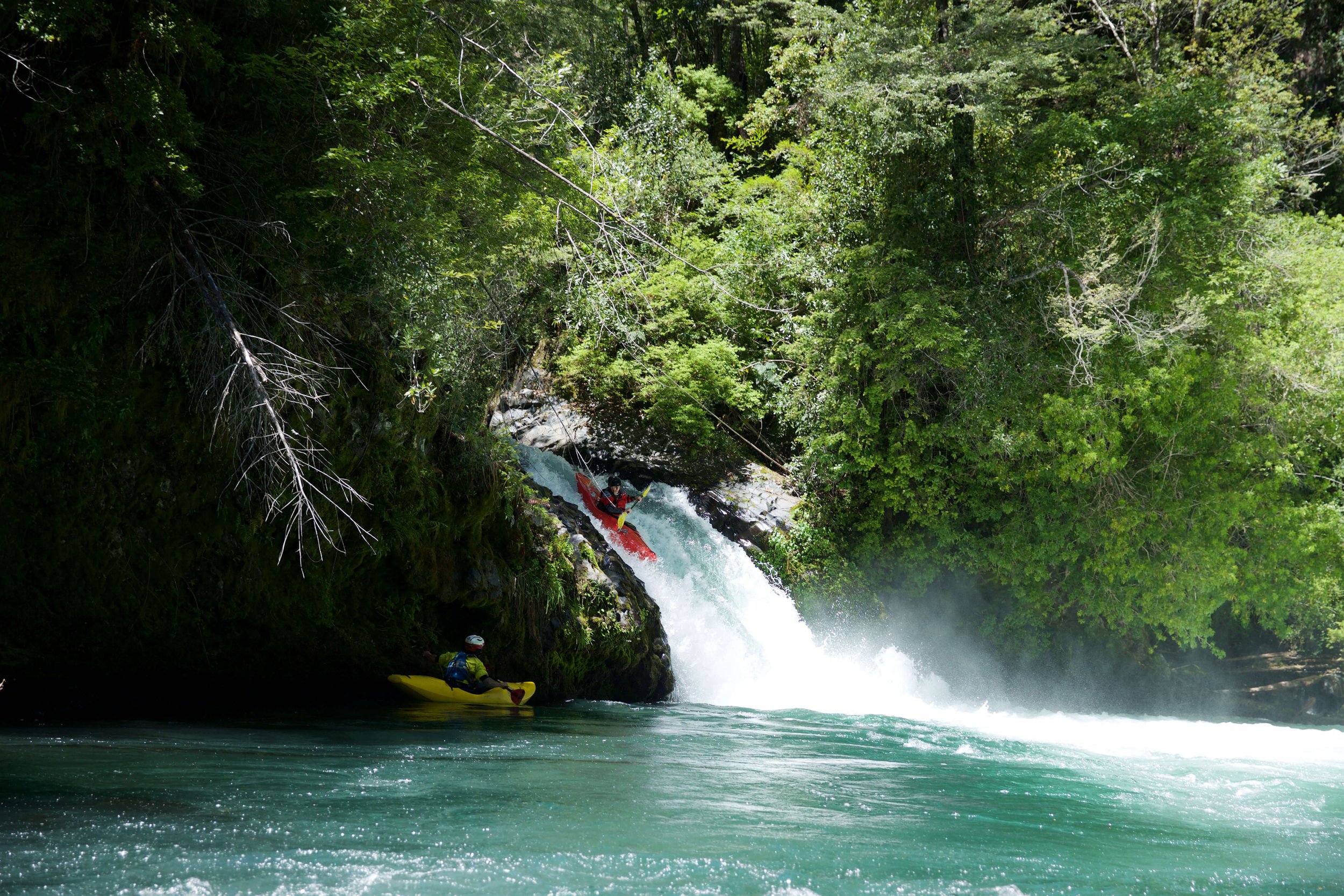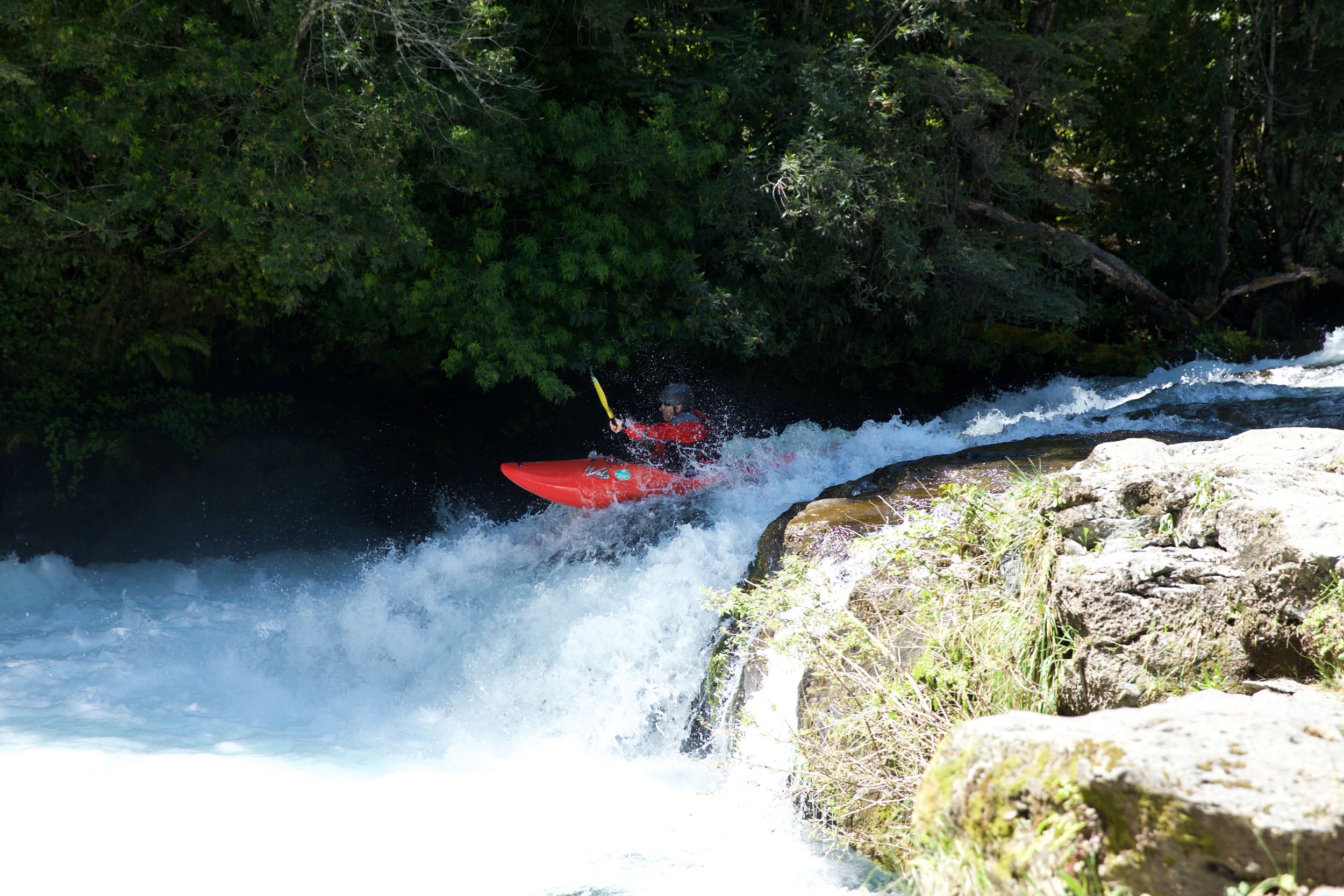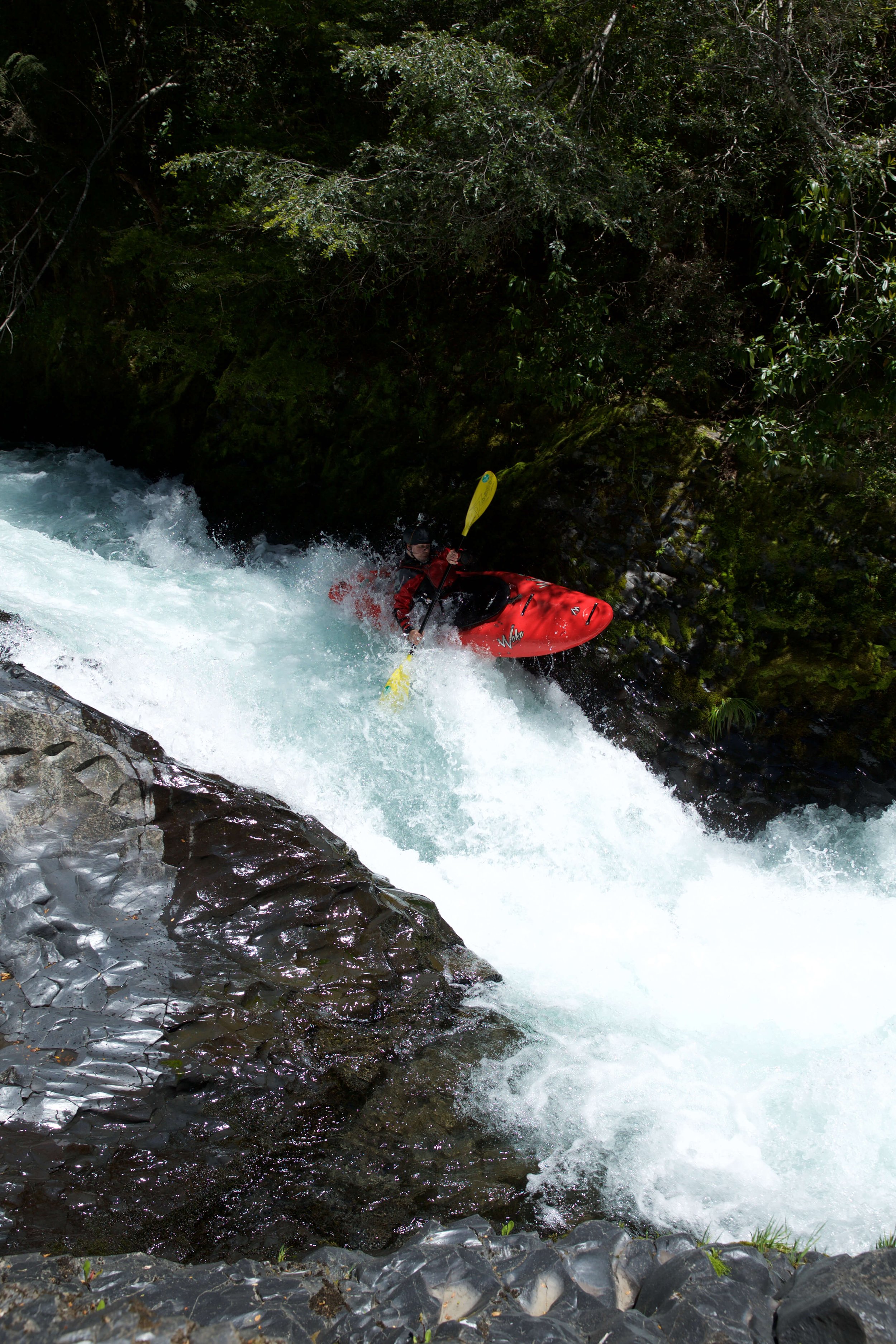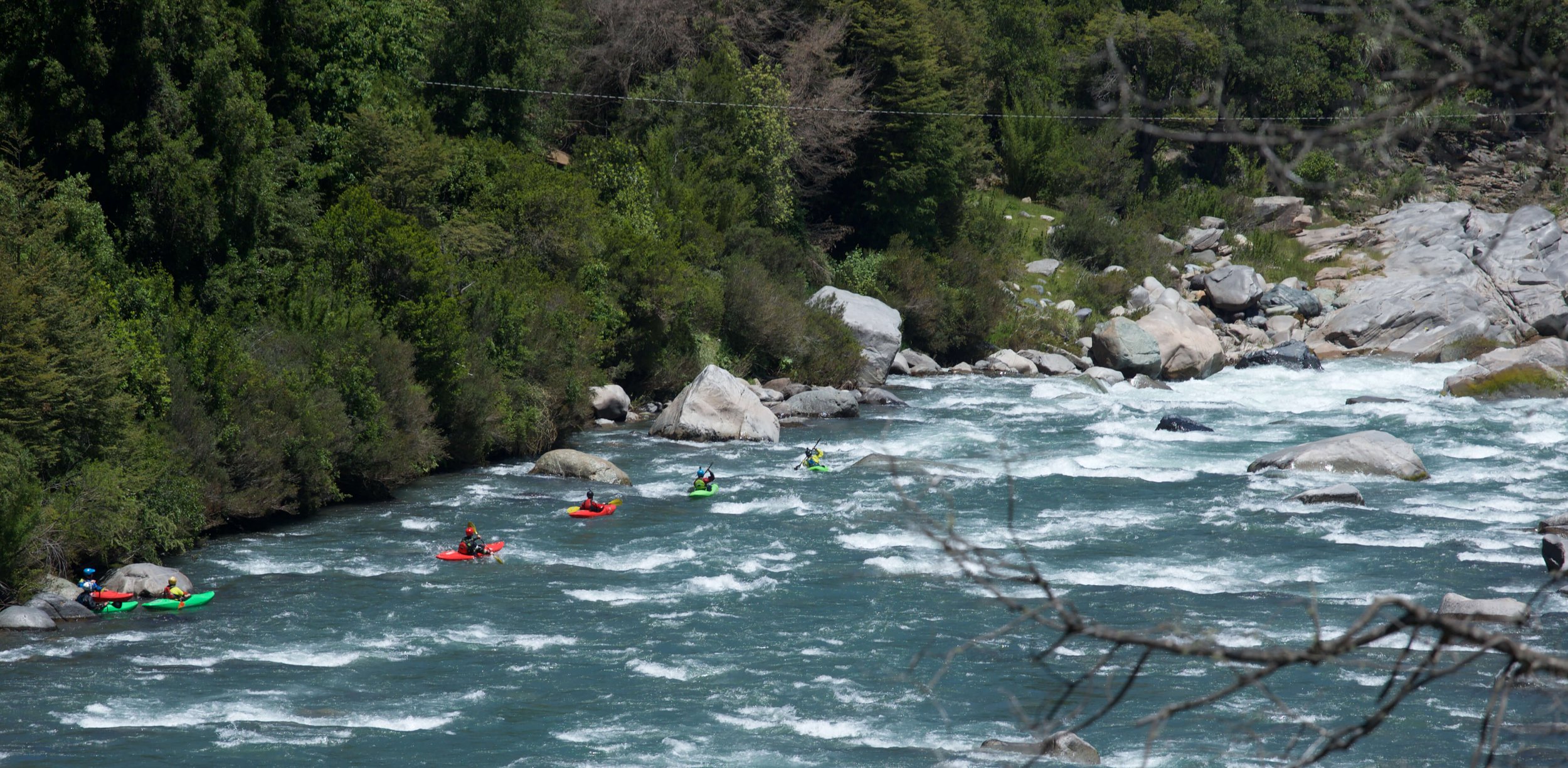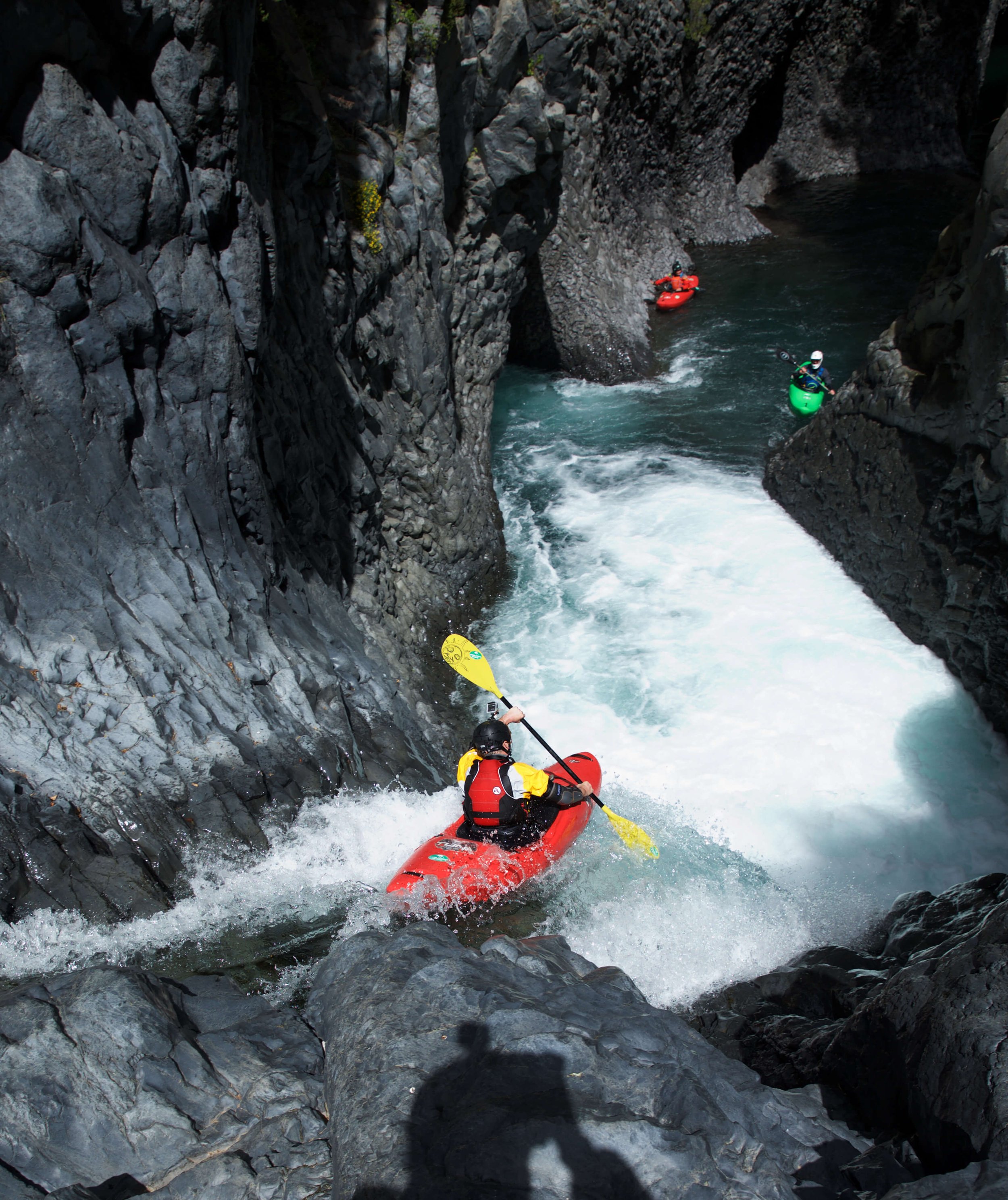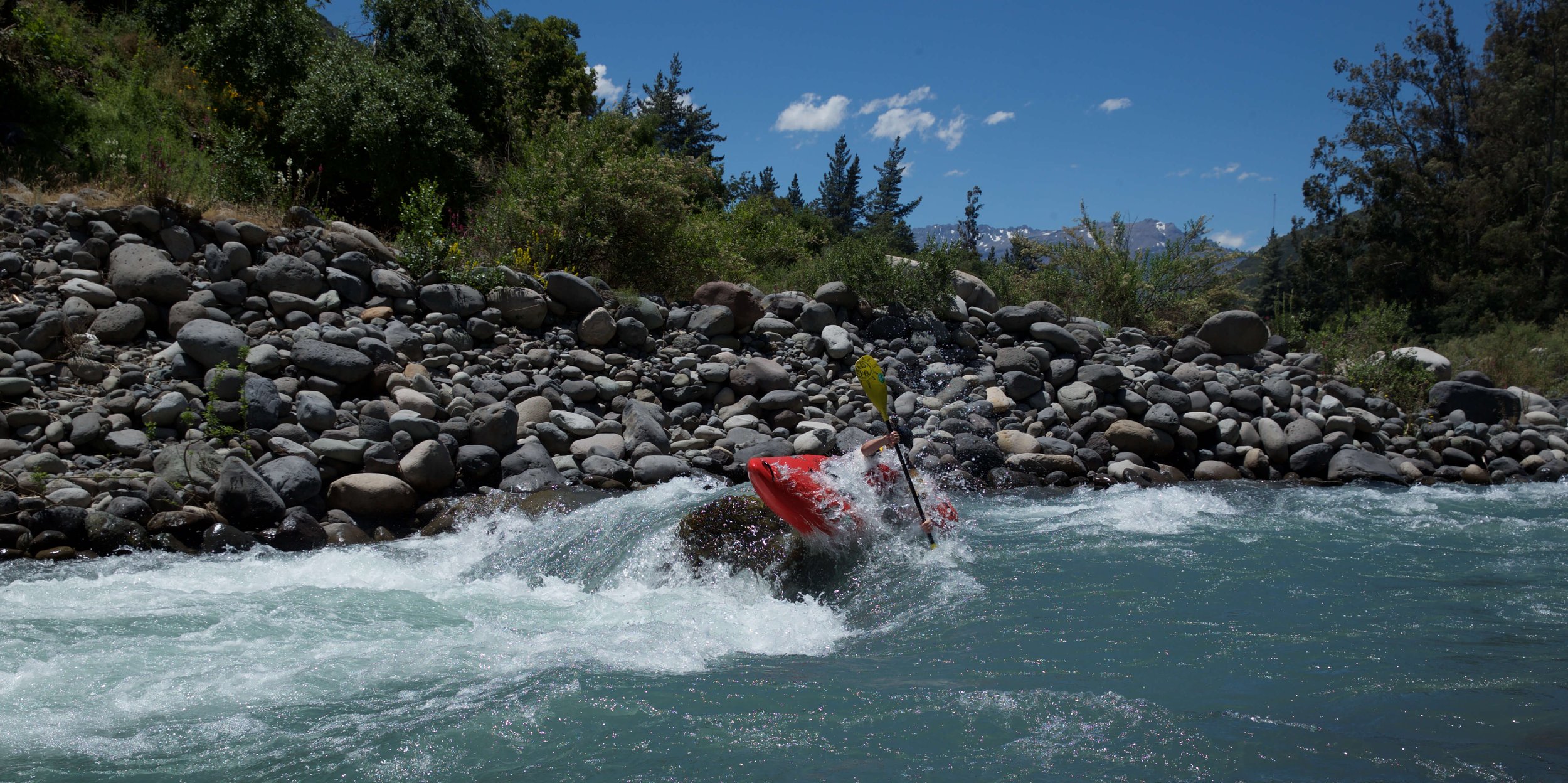Guest Blog - Bobby
Kayaking on the Rio Petrohue.
We asked Bobby if he would not mind putting a few words together for a blog of his trip with us to Chile.
Bobby came on our Chile Road Trip that we run in the Chilean Spring time at the beginning of December. We got Bobby’s cobwebs shaken off on the Rio Teno and then after a run down the 7 Teacups or Siete Tazas, he paddled some Big Volume on the Rio Bio Bio, Alpine Technical on the Rio Nuble and then we arrived in Kayak Mecca Pucon.
We spent time with the whole team coaching in the mornings and running a section of a Classic Pucon river. They had a day off to enjoy the town, rest the body and relax. As the following day we headed to the Upper Palguin to enjoy the waterfalls it offers at higher Spring levels!!
After Pucon we paddled the Rio Fuy and headed to Rio Petrohue for 2 days of Big water with stunning volcano backgrounds.
It is a fantastic trip for the confident and skilful kayaker during early December as Spring is realistically your best bet to catch the 7 Teacups. By mid-January the rivers become a lot more friendlier and the lower levels make it less pushier and intimidating!
We are going to be spending more time in Chile throughout their Spring and Summer as we have just built a lodge on the flanks of the Volcan Villarrica in Pucon.
Chile is one of our favourite kayaking destinations, so here is Bobby’s take on his trip to Chile…….
Chile ruined classed II paddling for me
I can’t say for sure when I realised it, but I know roughly when it happened. Before Chile I used to really enjoy paddling a neat line down an alpine class II rapid. Enjoying the scenery and the flow, it was fairly low risk and low reward stuff. Now, if I have the choice I tend to go down class II backwards with half a chocolate bar in my mouth and a look of utter contempt on my face.
It was all caused by Chile, or rather the change happened sometime between the put-in for the Rio Claro, the home of the famous 7 Teacup waterfalls and the take out of the Upper Rio Palguin in Pucon.
I distinctly remember clambering down to the rock ledge where the put-in is above the first drop on the 7 Tazas or 7 Teacups. We’d scouted it from above and even had a grandstand view of a group running it the day before and anyway it looked super easy on all those youtube clips. Well, standing looking down the first drop is a different matter entirely. Usually there is laughing and joking at the put-in but not here. Only silence and everyone avoiding eye contact. Steve helpfully turned to me and said “try to control your heart-rate”. My first thought was “errr … what?!” Followed by “He’s never said THAT before”. After a few successful drops from the rest of the group, I seal-launched and ran the drop into the boiling pool below. Promptly flipped and thought this is a lot harder than it looks. After some rather ineffective rolls as I was pushed up against the canyon wall, I remember thinking that the water was so clear I could see the texture of the basalt rock and tried to grab handholds to roll up. When that failed I tried pushing myself away from the rock, before realising my hand was now on David’s boat in the eddy. I rolled myself up and put it all to the back of my mind.
Kayaking on the Upper Nuble in Chile
I applied rather more concentration for the remaining drops, boofing the small ledges and ‘melting’ the bigger drops. Mostly though we were all just grinning like idiots and marvelling at being in the bottom of a stunning little gorge with crystal clear water. I’m still grinning thinking about it. Running waterfalls is really, really addictive.
The following days we paddled the Rio Nuble and the Rio Bio Bio, both fairly big volume runs. Although I’d paddled big volume rivers before these two combined technical sections with whopping waves and holes. It was intimidating stuff but equally exhilarating. Topped off in the evening with some great local Chilean wine and an asado - a traditional Chilean bar-b-q that this time consisted of a lovely tasting lamb from the farmer next door to where we were staying.
We arrived in Pucon, the kayaking capital of Chile if not the southern hemisphere, and built up towards kayaking the waterfalls and drops of the Upper Palguin. This build up training and coupled with my own extra training which mainly revolved around drinking the locally brewed ale and eating empanadas - Pucon is great.
Walking down to the put-in for the Upper Palguin, I was a little worse for wear and a previous version of me would have stayed behind. The Upper Palguin looked hard. As David summarised, ‘the Upper Palguin is all ‘Chilean class III’..... and in my opinion any section with a waterfall is technically class IV…. and Upper Palguin has three”.
Regardless of my physical and mental tiredness I was not missing this. We seal-launched into the start of this stunning green gorge and quickly eddied out to scout the first double drop. It's a short technical run-in, followed by a bit of sticky drop then a few metres to the 3m sloping waterfall. Commenting how the first sticky drop looked hard I asked David if you mess up the first drop is it better to swim or stay in your boat (which could mean going over the waterfall upside down). David said “Always better to stay in your boat, haha.” I always like clear instructions. Well, I broke back into the river and hit the curler on the lip on the left side with an aggressive right edge and a nice deep right boof - just like in those youtube clips.
My creek kayak was instantly back-looped in the first hole. I can’t print what my first thoughts were, but my second thoughts resulted in my very first off-side combat roll. On the lip of the second drop, going over backwards, I promptly flipped again. My third thought was ‘stay in your boat’. Landing in the boily pool I very calmly decided to simply wait upside down until Mati came and turned my kayak over (and there is no video evidence to prove otherwise… cough, cough).
I heard some calm and encouraging words coming down from Steve above, followed by an invitation to do it again!? My answer was ‘no’. But I realised a previous version of me was answering. The post-palguin version of me got out of my boat and ran it again. The second time was boringly straight forward and I made it look a lot easier!
Happy faces after kayaking the 7 Teacups section of the Rio Claro in Chile
The second rapid involved a rather committing solo run down about 50 metres of technical rapid followed by a blind sharp left bend and an immediate boof off the next waterfall. Not the neatest line but still successful. The third drop was bigger, about 7 metres. Scouting river left Steve gave the instructions, “It’s either a left-line and you melt the drop, or a right-line and you boof it… right Team which way are you going?” Realising the implications of an easy left-line or a harder right-line with a decidedly cooler looking photograph. I answered “Right”. Steve paused and responded “ok”. The pause I interpreted to mean “REALLY?” and the ‘ok’ meant “Well … ok”. I eddied out, marvelled again at how clear the water was, put in a few strokes, trying to remember the instructions we received at the Rio Claro, I levered my boat off the drop with a left boof stroke. The resulting photograph is now framed in my living room!!
I learned a few things over the space of a few hundred metres of this river. Firstly, paddling at this level is a lot harder than it looks and secondly, the rewards for “giving it a go” are massive.
Paddling in Chile was a stunning experience, very beautiful rivers and ‘Chilean Class III’ classification of their rivers and rapids is a real education. I still paddle a lot of class II and I do still enjoy it, but I tend to take a playboat now.
Bobby R
